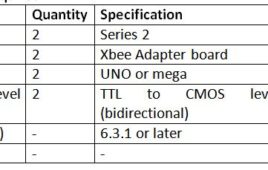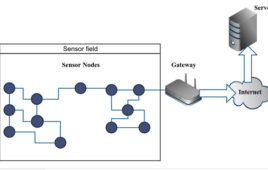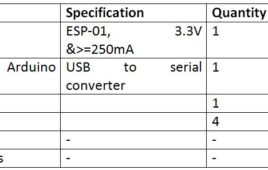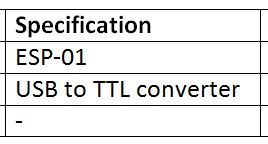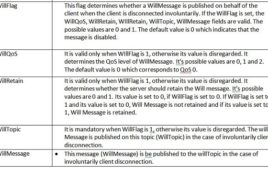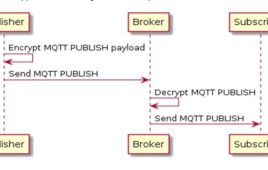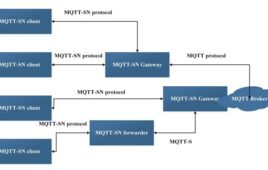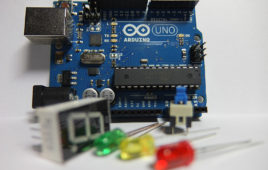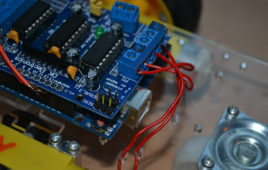In the previous tutorial, Zigbee technology and its application in building Wireless Sensor Networks was discussed. In this tutorial, learn to perform simple Client to Client Communication over Zigbee Protocol. There will be two Xbee modules taken and will be configured to communicate data with each other over the air. The Xbee devices communicate with each other wirelessly over the air. They do not have any microcontroller or processor in themselves, so they cannot manage the received or sent data.
Zigbee Protocol and Standard : IoT Part 35
In the previous tutorial, the basics of Wireless Sensor Networks were discussed. It was mentioned that WSN can utilize many wireless standards and protocols to enable sensor communication with a cloud or server. It was also mentioned that wireless sensors communicate to a cloud or server with the help of a Gateway which performs protocol conversion for the wireless network. Zigbee is one of the standard and protocol which is generally used for WSN deployed in industrial applications.
Wireless Sensor Networks (WSN) : IoT Part 34
The sensors and actuators have an important role in IoT. It the sensors and actuators that enable IoT devices to interact with the physical world. The large IoT applications like smart home, smart transportation, smart grid and many others are intelligent systems that connect the world in an automated way to ease human efforts. The collective aim of such systems is to nurture the concept of IoT which is fulfilled with the use of tiny sensors. The whole Sensor Network is tightly coupled directly or indirectly with communication Network (Internet) where intelligent monitoring, management, and data processing can be achieved via the usage of networked cloud computing devices.
Client Server Communication over CoAP Protocol : IOT Part 33
In the previous tutorial, advantages of CoAP protocol over TCP/IP and UDP protocols in IoT applications were discussed. The CoAP protocol is specially designed for constraint devices and networks. In this project, the application of CoAP protocol in IoT will be demonstrated. In this project, an ESP8266 Wi-Fi modem will be configured as CoAP server and a laptop will be used as CoAP Client. Both Client and server will be co-located communicating through same Wi-Fi router so, the ESP board will act as a local server. The CoAP Client could send data to the server on a particular port with the help of browser add-on – Copper (Cu) CoAP user-agent. In fact, the Copper (Cu) itself will act as CoAP Client.
Constrained Application Protocol : IOT Part 32
The IoT devices have very limited resources like they have embedded processors or controllers, limited RAM and ROM and they need to operate on battery without replacement for weeks, months or even years. Even they have to communicate data swiftly though small in amount but on limited network bandwidth.
GPRS Communication with PC Client over MQTT Protocol : IOT Part 27
In the previous tutorial, SIM800 module was configured as TCP-IP Client and a PC was configured as TCP-IP server. The two were setup to communicate over TCP-IP stack using an Arduino UNO as gateway. In this tutorial, the SIM800 will be configured as an MQTT Client and setup to communicate over MQTT protocol with a PC client. In the previous tutorial, the PC was configured as server to set SIM800 modem into working mode. In this project, the PC will serve as another client and communicate with the GSM GPRS modem via HiveMQ broker.
Ethernet Technology : IOT Part 23
In the previous tutorials, the IOT devices designed were connecting with the internet network via Wi-Fi. Wi-Fi is a wireless standard. It is commonly used to provide data communication among mobile devices and the internet network. Another common standard used for networking devices and computers is Ethernet. Ethernet is most commonly used Local Area Network (LAN) technology. It provides a wired communication to connect the devices to the Internet.
ESP8266 to ESP8266 Communication over MQTT Protocol using HiveMQ Broker : IOT Part 22
Device to Device Communication has a great role in IOT. In context to IOT systems, this device to device communication usually voids human interaction and control over the devices and the devices are meant to communicate with each other autonomously. In this tutorial, a similar demonstration of Device to Device Communication is presented.
Client Server Communication over UDP Protocol : IOT Part 31
In the previous tutorial, advantages of UDP protocol over TCP/IP in IoT applications were discussed. The UDP protocol has a small overhead of 8 bytes which makes it more suitable for use in the Internet of Things. In this project, the application of UDP protocol in IoT will be demonstrated. In this project, an ESP8266 Wi-Fi modem will be configured as UDP server and a laptop will be used as UDP Client.
onsemi expands analog portion with analog front-end for battery-powered sensor applications
onsemi announced the availability of the CEM102, a compact analog front-end (AFE) that enables electrochemical sensing with exceptional accuracy at very low currents. With its small form factor and industry-leading low power consumption, the CEM102 allows engineers to create versatile and compact solutions for industrial, environmental, and healthcare applications such as air and gas detection,…
How to combine a gateway and server when using LoRa
In this tutorial about LoRa technology, we’ll cover two methods for combining a gateway and server by sending data to a PHP script for storage in a database and redirecting data to an MQTT server. ChirpStack is a powerful LoRaWAN network server that offers versatile integration options for managing and visualizing data. Let’s delve into…
Part 1: Types of open-source LoRa gateways and servers
ChirpStack is an open-source LoRaWAN Network Server that provides a solution for managing and maintaining LoRaWAN networks. LoRaWAN is a low-power, wide-area networking protocol. This article offers a step-by-step guide to ChirpStack installation, allowing a stable Internet-of-Things (IoT) network foundation. To learn how to connect and set up the initial hardware, please refer to this article:…
Understanding MQTT Protocol : IOT Part 14
Message Queue Telemetry Transport (MQTT) protocol is an application layer protocol. The application layer provides an interface between the end nodes (IOT devices) and the network. In case of computers, laptops and mobile devices, the application layer is usually implemented by the browser. In case of IOT devices, the application layer may be implemented either by the running operating system (if an embedded OS is running on it) or by the firmware. In computing world, the most common and ubiquitous application layer protocol used is Hypertext Transfer Protocol (HTTP). The HTTP protocol has been designed for communication between a client and a server. The protocol uses request/response method in which when a client needs data from the server then it sends a request message to the server and server sends back a response message.
MQTT Brokers : IOT Part 15
The Broker or Server plays the prime role in an MQTT (Protocol) based network. MQTT devices need MQTT broker to communicate with each other. MQTT broker is nothing but a central server connected to the Internet. The broker or server acts as a decision-maker which sits in between the devices. The clients do not know each other, they have to communicate via MQTT broker. The broker is mainly responsible for receiving all messages from publisher clients, filtering them, decide which subscriber is interested in it and then sending the messages to the subscribed clients. The MQTT broker also holds the session of all persisted clients including subscriptions and missed messages.
MQTT Security : IOT Part 16
Security in IOT cannot be an afterthought. It is an integral part of IOT development. The idea of IoT is not only to connect the normal daily things to the Internet but also to transfer the data securely among various end points so that smart IoT applications are not only efficient and successful in fulfilling various personal and professional requirements but also highly reliable.
MQTT for Sensor Networks (MQTT-SN) : IoT Part 39
The Internet of Things have specific network requirements. The traditional TCP/IP protocols usually do not fit to these requirements. That is why there are many protocols designed especially to cater the requirements of IoT applications. Within the IoT domain, sensor networks are one of the applications which are designed using constraint devices and are characterized by limited network bandwidth. A variant of MQTT protocol has been designed for these networks which is called MQTT-SN (MQTT for Sensor Networks).
Arduino compatible coding 01: Arduino MCU family
Embedded electronics are in a countless number of devices and appliances, with microcontrollers at the heart of the operation. A microcontroller is a compact integrated circuit that controls a specific operation in an embedded system. There was a time when only BASIC stamp microcontrollers, with a simple interpreter, were available for designing, prototyping, and testing…
Arduino compatible coding 02: Getting started with Arduino
Arduino are single-board microcontrollers that are easily programmable through a USB connection. They are used with electronics to design embedded system prototypes, the Internet-of-Things (IoT), and electronic gadgets. Much like other microcontrollers, Arduino provides software-backed computing and embedded control to basic electronics applications. That means getting started with Arduino is no different than with other…
Arduino compatible coding 03: Basics of Arduino sketches and Embedded C
The previous tutorial included a discussion about the tools and components necessary to get started with Arduino. However, before starting with Arduino UNO (or any other Arduino board) — and experimenting with hardware projects on various sensors, actuators, and modules — it’s important to get through the basics of Arduino sketches and the embedded C…
Arduino compatible coding 04: Interfacing and driving LED by digital output
In the previous tutorial, we discussed the basics about Arduino sketches, with a a quick Arduino language reference. Now, it’s time to get our hands dirty. Interfacing LED and driving digital output from a source is the “Hello World” of embedded systems. As discussed in the previous tutorial, a microcontroller interfaces and interacts with other…

